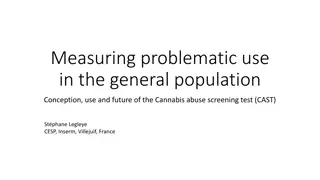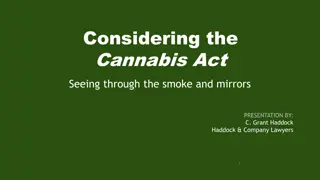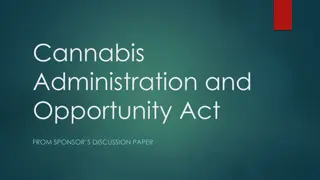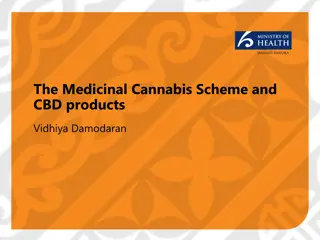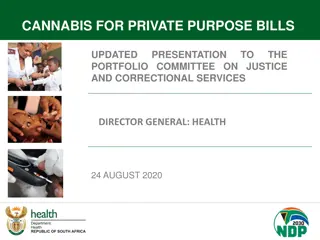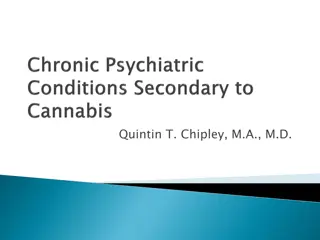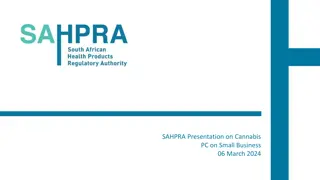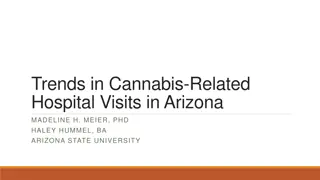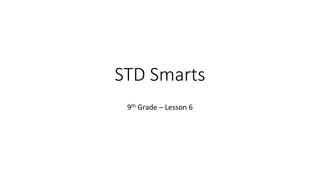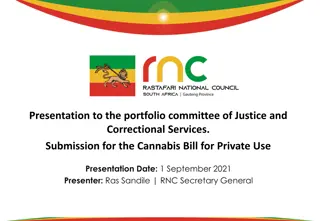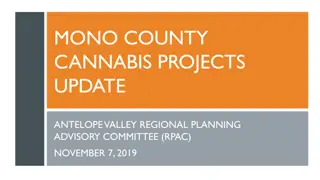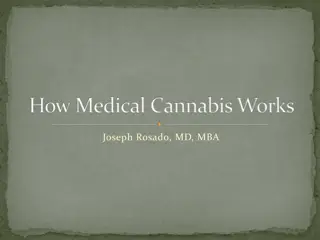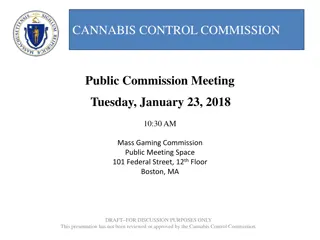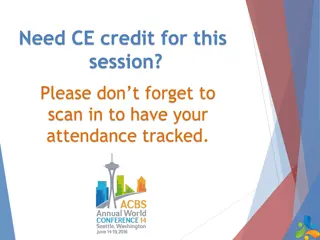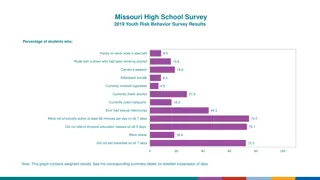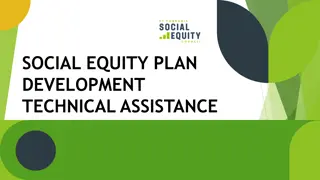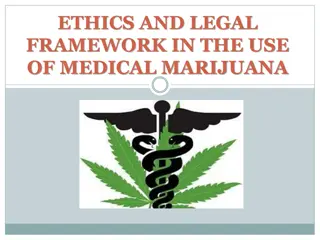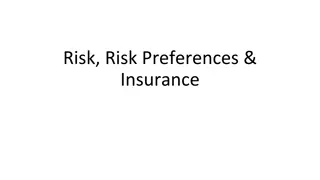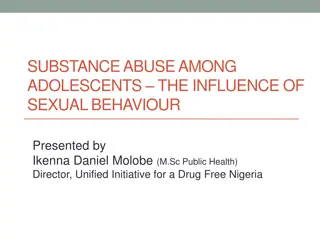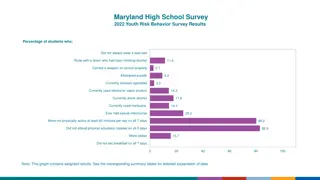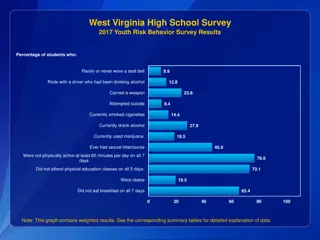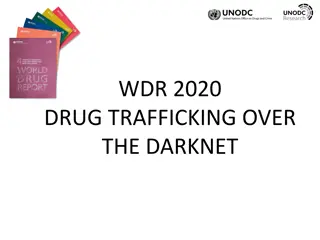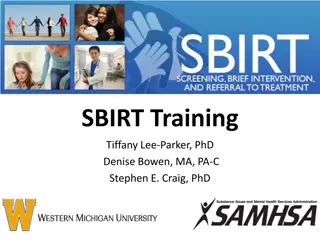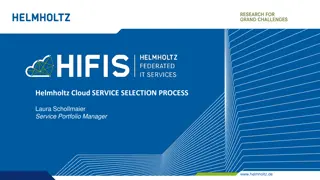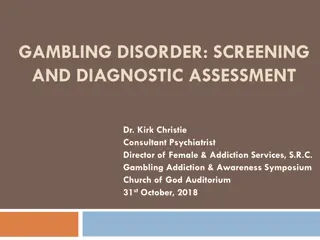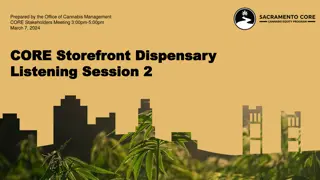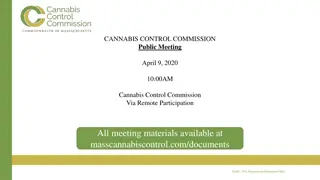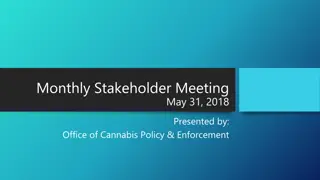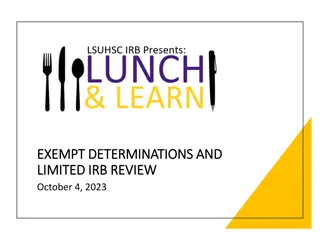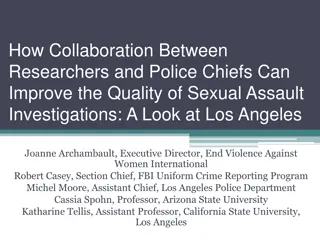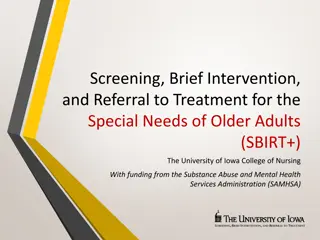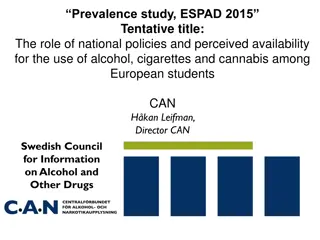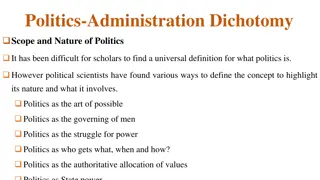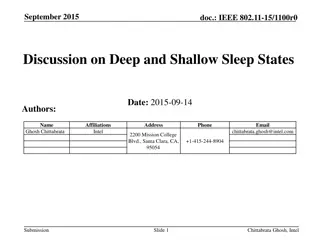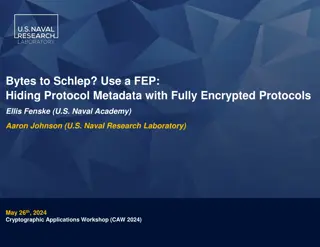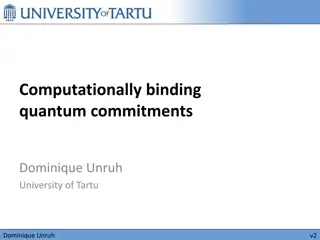Definitions and Criteria for Risky and Problematic Cannabis Use: A Review
The systematic review explores definitions of risky and problematic cannabis use, highlighting the need for early interventions in at-risk users. It identifies gaps in official definitions, distinguishes between risky and problematic use, and provides insights from a methodical analysis. Screening tools and frequency of consumption are key criteria utilized in defining such use.
Download Presentation

Please find below an Image/Link to download the presentation.
The content on the website is provided AS IS for your information and personal use only. It may not be sold, licensed, or shared on other websites without obtaining consent from the author. Download presentation by click this link. If you encounter any issues during the download, it is possible that the publisher has removed the file from their server.
E N D
Presentation Transcript
Definitions of risky and problematic cannabis use: a systematic review Casajuana C, L pez-Pelayo H, Miquel L, Balcells MM, Colom J, Gual A
There is no conflict of interest related to this presentation
Introduction Cannabis the most used illicit drug worldwide Increasing evidence on organic, psychiatric and social consequences of consuming cannabis Early interventions in potential at-risk cannabis users are needed but how can we identify this users?
Knowledge gap Official definitions are lacking Risky cannabis use: pattern increasing the probability of future negative consequences Problematic cannabis use: pattern already causing negative consequences, with or without fullfilling dependence criteria
Objective Conduct a systematic review to: 1) Identify and analyze current definitions and criteria used in scientific literature and by official organizations or institutions 2) To identify if there exists a consensus 3) Give recommendations for further studies
Methodology Flowchart resulting from the systematic literature review following PRISMA guidelines 17 definitions for problematic cannabis use 25 definitions using screening tools 8 definitions for risky cannabis use 43 not fulfilling exclusion criteria + 3 references 46 articles finally included 7 definitions for problematic cannabis use 1582 unique entries by 21 definitions using frequency of cannabis use title/abstract 73 fulfilling inclusion criteria 14 definitions for risky cannabis use 19 fulfilling exclusion criteria: 1508 not fulfilling inclusion criteria -Imprecise definition (N=12) -Personal characteristics (N=7)
Results Identified criteria used to define risky and problematic cannabis use: a) Screening tools (N=25) Specific for cannabis Cannabis Abuse Screening Test (CAST) Cannabis Use Disorder Identification Test (CUDIT) Cannabis Use Problems Identification Test (CUPIT) Not specific for cannabis Alcohol, Smoking and Substance Involvement Screening Test (ASSIST) CRAFFT Test b) Frequency of consumption (N=21)
Specific screening tools Screening tool Term used Author Proposed cut- off score Score 4 Screened population CAST Screens for cannabis abuse 6 items Lifetime use Risky cannabis use Guitart (2012) Adolescents Problematic cannabis use G lera (2013) Score 2 Score 3 Adolescents Military sample Gheorghiev (2009) Redonnet (2012) Lyvers (2013) Score 2 Score 8 Young adults Young adult users CUDIT Screens for cannabis abuse and dependence 10 items Past 6 months Risky cannabis use Problematic cannabis use Adamson (2010) Score 13 Mental health patients Adamson (2003) Scores 8 Alcohol-dependent out-patients Adolescents and young adults General population Health care settings General population Annaheim (2008) Score 6-8 Thake (2011) Scores 6 Scores 8 Scores 8 Annaheim (2007) CUPIT Screens problematic cannabis use and risk of developing CUD after 12 months. 13 items Considers frequency & times cannabis is used in a typical occasion Past 3 and 12 months Risky cannabis use Bashford (2010) Score 12 Cannabis users recruited from different settings , including patients and general population)
Frequency Author (year) Proposed frequency pattern Justification Risky cannabis use Caldeira (2008) Coffey (2003) Degenhardt (2008) D az (2011) Fischer (2012) Gmel et al (2010) 5 or more times in the past year Weekly cannabis use At least weekly Almost weekly At least weekly At least twice a week during the past 6 months, or more than once per week during the past month At least weekly during the year of the survey Weekly (moderate risk) or daily (high risk) Several consumptions per week Empirically decided Cohort study Empirically decided Empirically decided Empirically decided Empirically decided Ogborne (2000) Patton (2003, 2007) Van Ours (2013) Survey result Cohort study Cohort study Problematic cannabis use Kay- Lambkin (2009 y 2011) At least weekly use Kelly (2014) Empirically decided Survey result (children) More than 2 days of marijuana use in the past 12 months More than 3 times in the past month Steinhausen (2007) Empirically decided
Institutional web-pages Only three included a definition related to risky or problematic cannabis use EMCDDA High risk users are frequent cannabis users, defined as consuming 20 days or more a month. Canadian Centre on Substance Abuse At risk cannabis users are individuals consuming less than 1 gram, a few times a week, at night and especially at weekends during several years with periods of high intensity usage PNSD Binary CAST scores of 2-3 are indicative of a low risk and scores above 4 suggest a high risk to develop problems related to cannabis use.
Limitations of current criteria No consensus = high variability Incomplete criteria Mostly not evidence based Quantities not considered No timeframes Specific at risk groups are not reflected
Recommendation 1) Clearly differentiate both concepts 2) Work for evidence based and complete definitions - Quantity & frequency - Timeframes - Specific considerations for high-risk groups Risky use Problematic use Quantity and frequency Screening tool
Conclusions To promote early interventions we need to be able to identify at risk and problematic cannabis users Consensus on definitions is decisive Need to homogenize and complete definitions Recommendations to the public


